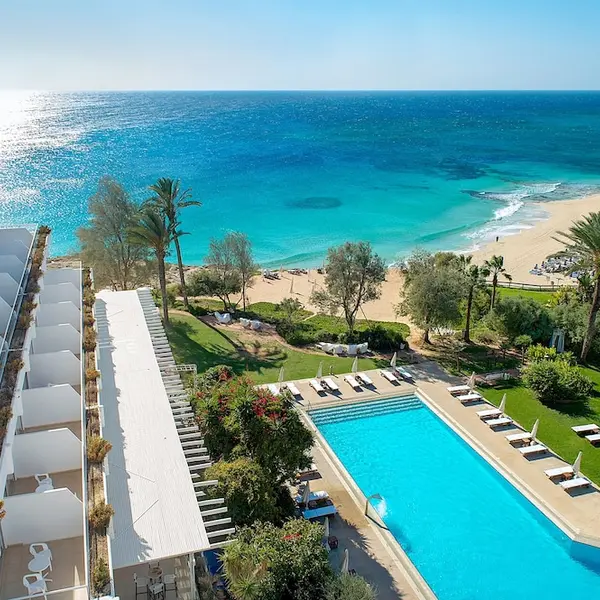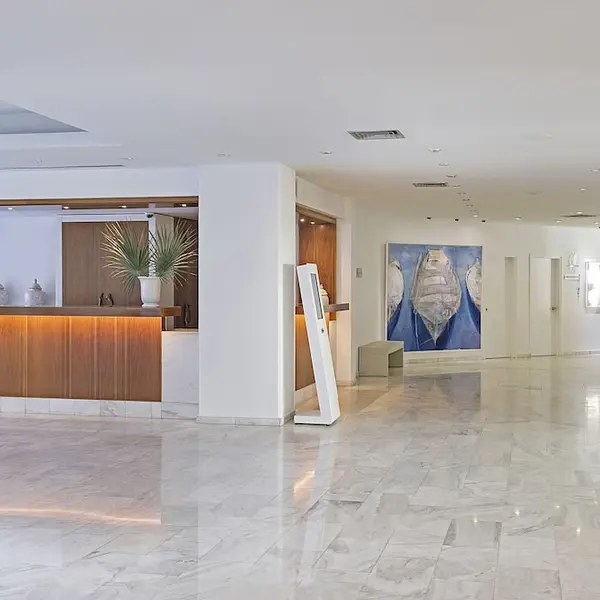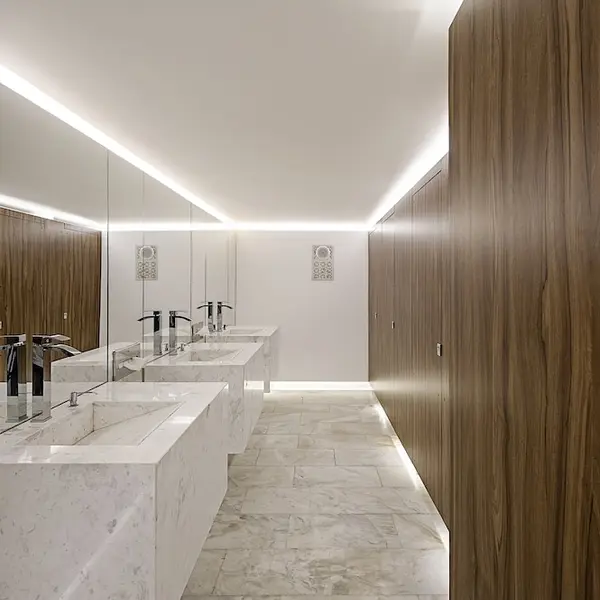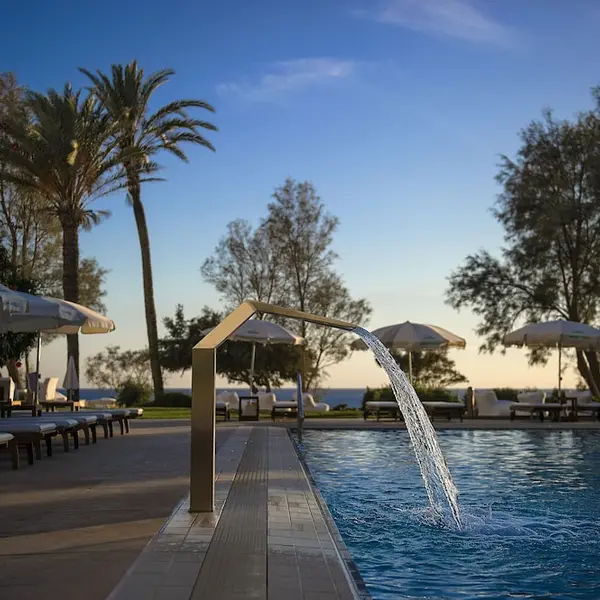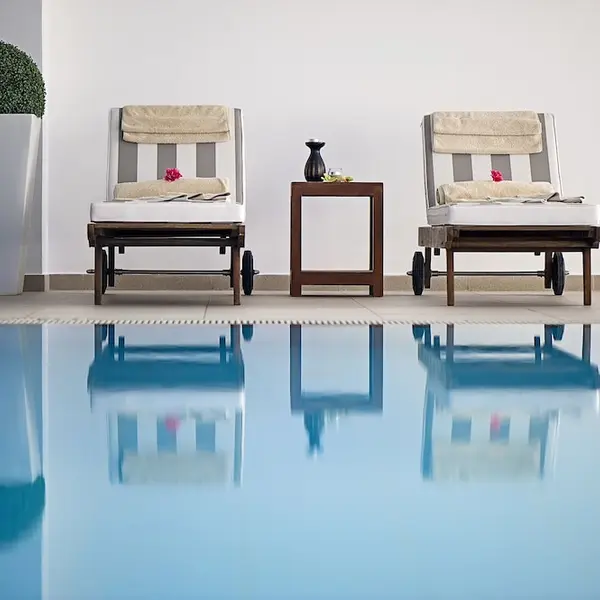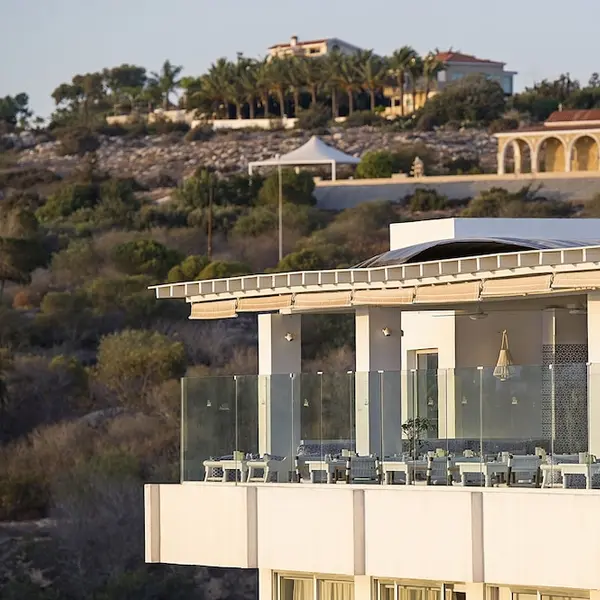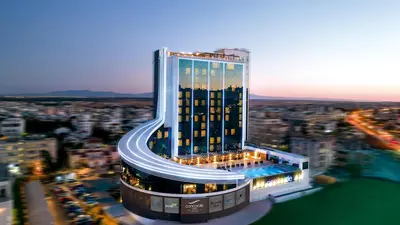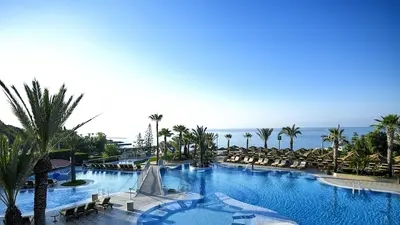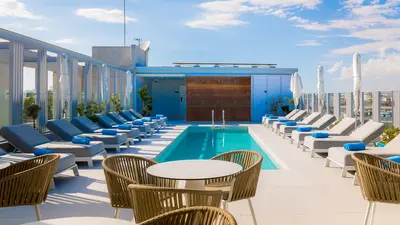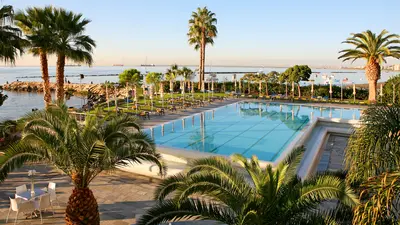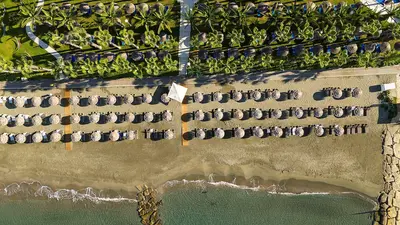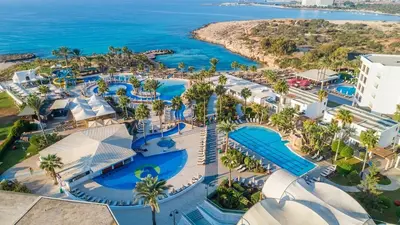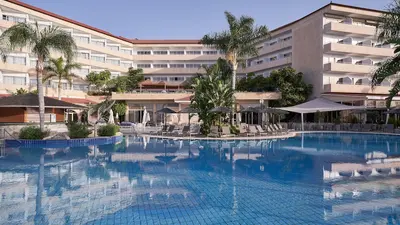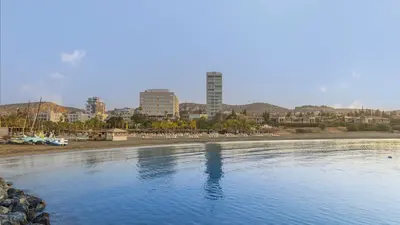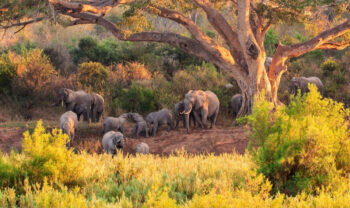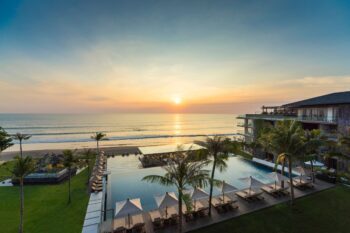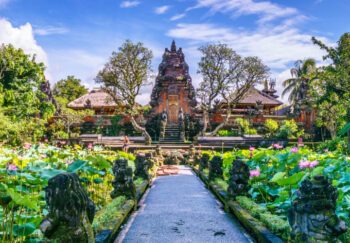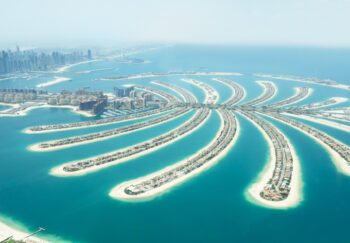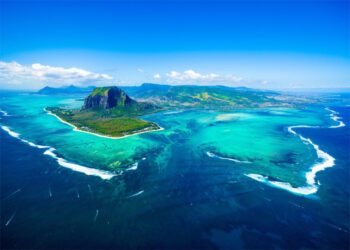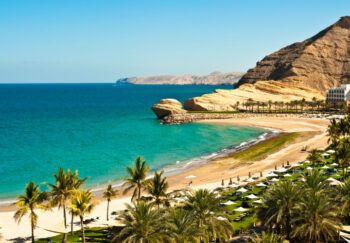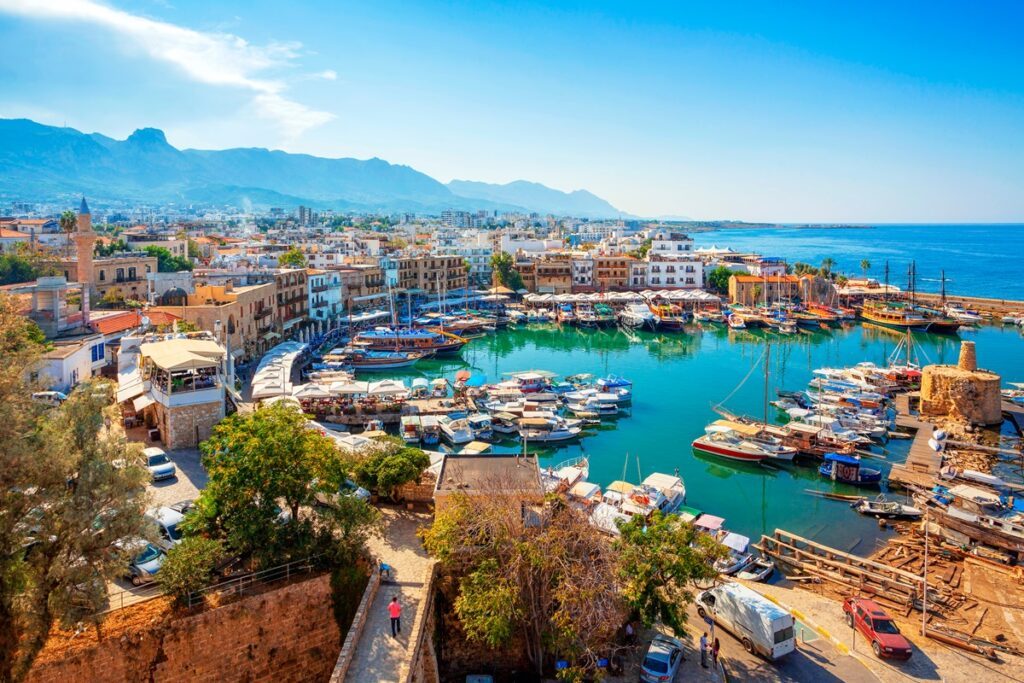
Known as the island of love, Cyprus is the setting for the new Netflix film Find Me Falling, starring Harry Connick Jr. Christina Koullas visits the sets with the film’s director and falls in love with an island that is every bit as photogenic as it appears on screen.
Filmmaker Stelana Kliris and I are standing on the clifftop where much of her new Netflix film Find Me Falling is set, and I might be taking the film title to heart seeing as my stomach flutters when we’re closer to the edge than I’d like. I’m surprised at how remote the area, only a little outside of the town of Peyia, in the Paphos region, feels. After all, this is an island where you can drive from the west – where we’re currently perched – to the east of the country in a matter of hours.
“Not many people know Cyprus, and they think it’s a Greek island but it’s so much more than that,” says Stelana, who describes her new romantic comedy as a “love letter to Cyprus”. Cyprus is an island nation in the east Mediterranean Sea, technically part of West Asia but with cultural ties far closer to that of southern Europe.
Unrivalled natural diversity and cinematic scenery
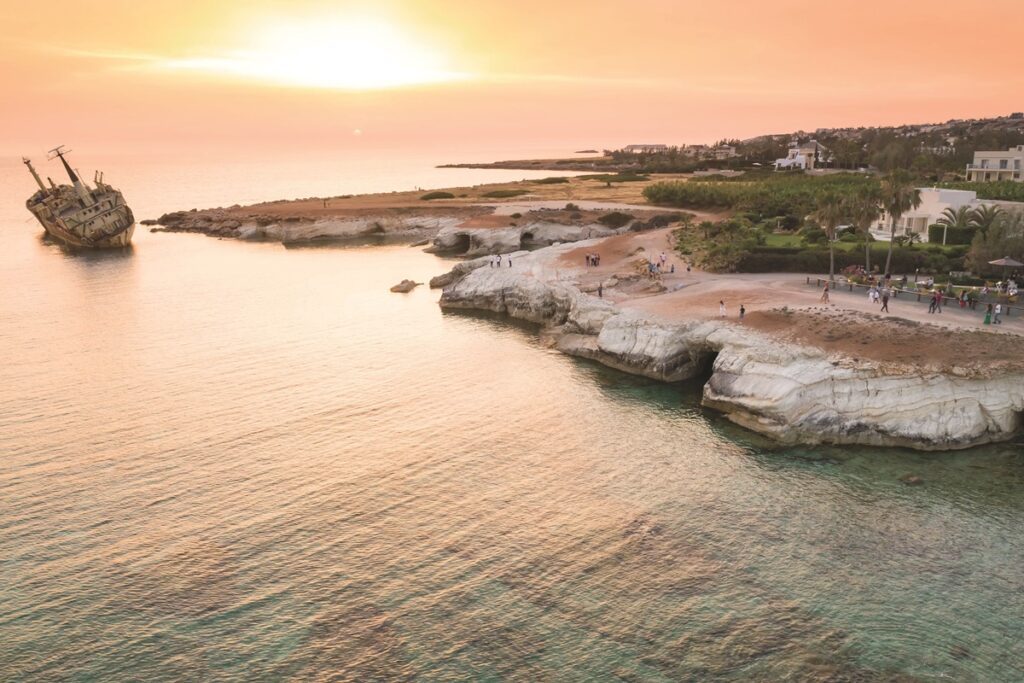
From our position on the precipice, I can see the teal waters of Lara Bay ripple at the base of the cliff and in the distance to the left lies Yeronisos, a tiny rock island that NYU archaeologist Joan Connelly has visited for the past 33 years to excavate “unparalleled” treasures from the Late Hellenistic period (when Cleopatra ruled over Cyprus).
Below us, to the right, lies White River Beach where green and loggerhead turtles lay their eggs in the summer; this important annual event created an inevitable deadline for shooting the film. Other environmental considerations saw the crew build the movie’s quaint clifftop house in a factory, transfer it to the location a few days before shooting and remove it as if it never existed when they were done.
When Stelana explains the advantages of filming in Cyprus, she’s also describing why visitors return to the country time and again.
“We have more than 300 days of sunshine a year and a great variety of locations that you can get to in a short amount of time,” she says. “Cyprus is rarely seen on the big screen. Outside of the usual tourist groups, it’s unexplored territory at the crossroads of Asia, Africa and Europe.”
Dreamy dining and coastal adventures
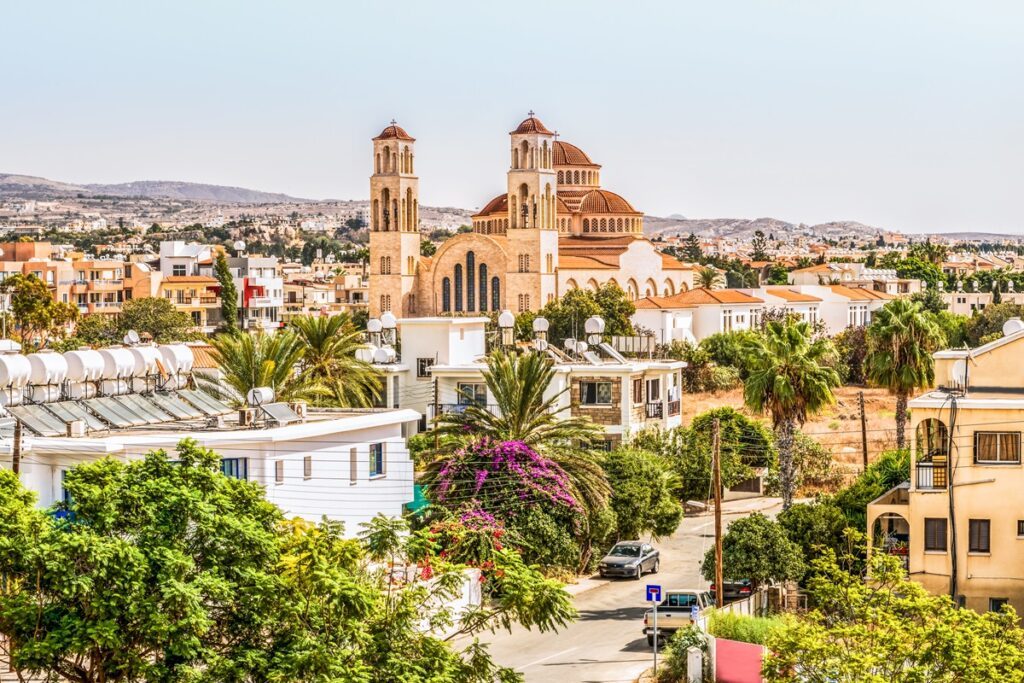
We head south for lunch to Oniro by the Sea on the Peyia waterfront, passing the Agios Georgios Church that also features in the film, and I meditate on the expansive ocean views. Public transport in Cyprus is as sparse as the rain, but as a driving destination, you’re rewarded with sea vistas, even on highways.
As we graze on an international menu of seafood kritharoto (orzo pasta), kefaloparmezana (Greek cheese) arancini and prawn salad, I come to understand exactly how the restaurant lives up to its translated name: “dream”. The shipwrecked Edro III, whose rusted hulk sits around 100 metres from our table where it ran aground in 2011, adds a touch of whimsy to this dining destination.
Across the cove from where we dine, sea caves peak out from underneath the bluff, which confident swimmers can access depending on the tides. A boat tour is a great way to explore the caverns with an experienced guide or to venture further afield to almost unfathomably beautiful sights such as the Blue Lagoon and St George’s Island around Akamas Peninsula National Park.
I finally return to my base in Cyprus, the nearby Coral Beach Hotel & Resort, to relax for the evening. The property in Peyia is where many of the Find Me Falling production crew and actors recharged during shooting. Although the hotel has its own private beach, the cocktails, sunbeds and crystal aqua waters of the adjacent pool call to me. I’m travelling in the hotter European summer months when the average maximum temperature is 30°C.
Warm hospitality makes you feel at home
Later, I’m ambling to my guest room when the hotel’s assistant general manager identifies me as a solo traveller and invites me to the resort’s free weekly cocktail night (that runs during the busier tourist season). It’s a lovely way to meet new people and for the hotel team to check you’re enjoying your stay (yes, I am).
Cyprus may be a divided country since the Turkish occupation in 1974, but the warmth and hospitality of the locals hasn’t waned. According to Harry Connick Jr., as he got to know the people and learn about the culture during filming, he “really fell in love with Cyprus”.
“The landscape is absolutely breathtaking and incredibly diverse; there’s mountains, ocean, there’s lush green, and there’s more desert-like topography,” says Harry. “Everyone we worked with really cared, not only about the project but about me, my family and my team. All of us have been treated with such immense respect that all we can talk about is ‘when can we come back?’.”
Like most relationships, Cyprus has a complex history with influences of the Roman, British and Byzantine Empires among others, but it has emerged more compelling and intriguing as a result. The Netflix film, premiering in July, is likely to attract a new era of visitors who find themselves falling in love with Cyprus, too.
This article was originally featured in the fifth issue of Dream by Luxury Escapes magazine. Get your copy of the latest issue here.
